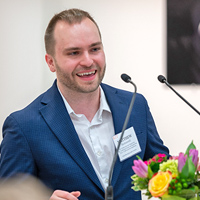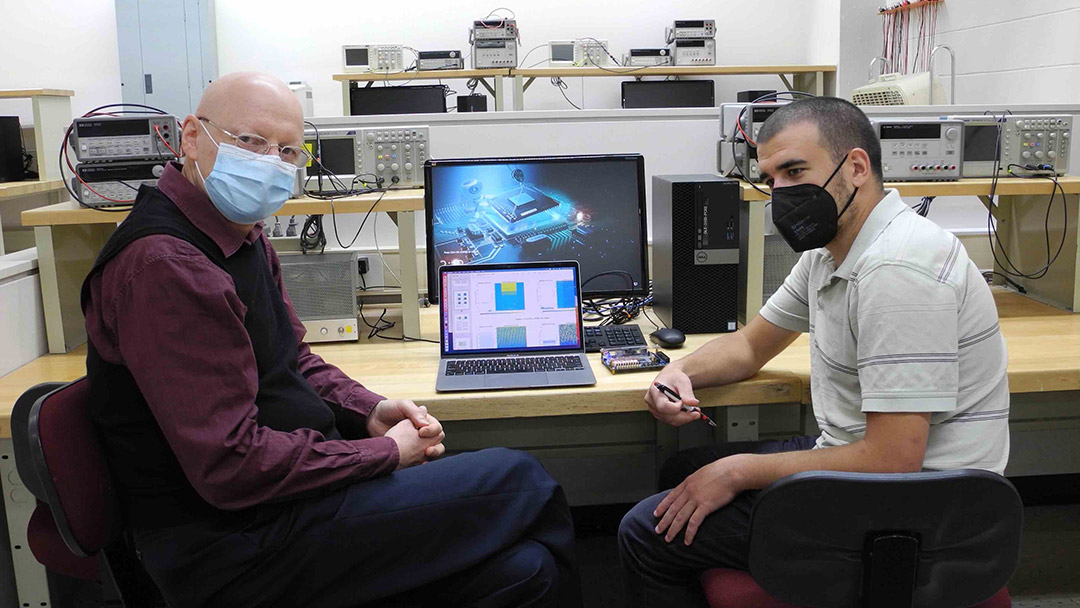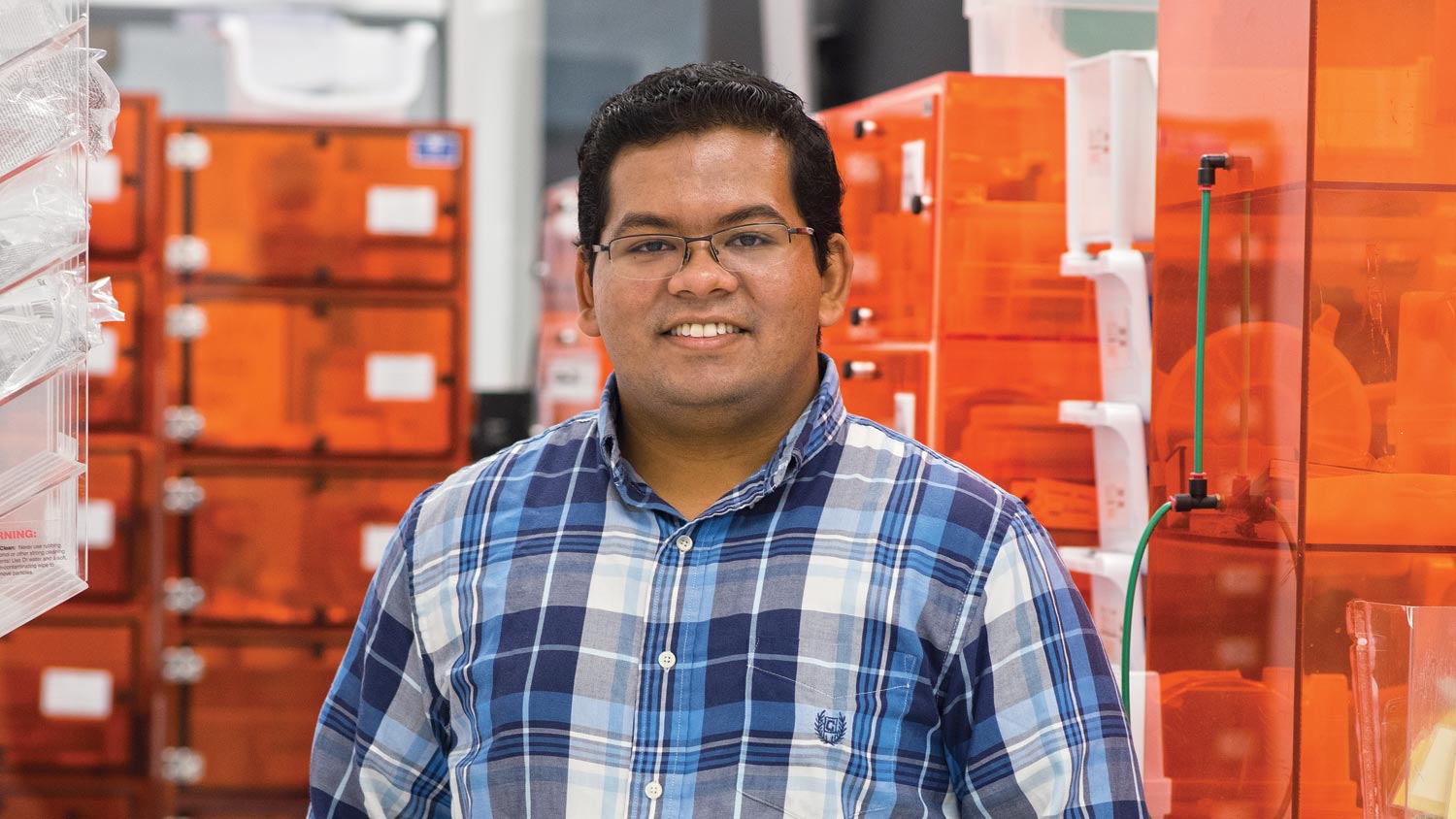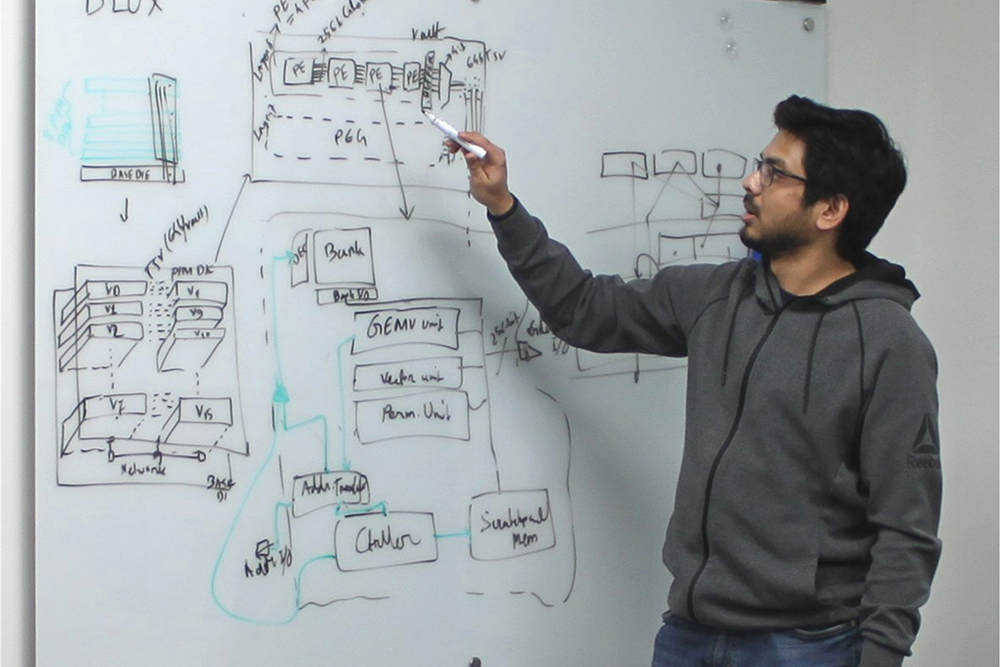Microelectronic Engineering Alumni Shaping the Future in Diverse Industries
RIT's microelectronic engineering graduates are making significant advancements in various fields, from LED display technology and sensor systems to NASA's Mars missions, showcasing the impact of their education and innovative spirit.

At the intersection of innovation and technology, RIT has produced a remarkable cohort of microelectronic engineering graduates who are driving change across diverse fields. From pioneering advancements in LED display technology to developing groundbreaking sensor systems and contributing to NASA's Mars missions, these alumni illustrate the significant impact of their RIT education. Here, we highlight five notable graduates whose remarkable careers showcase the versatility and value of a degree in microelectronic engineering.

Micro-LED displays
Matt Hartensveld, ’18 (microelectronic engineering), ’18 MS (materials science and engineering), and ’21 Ph.D. (microsystems engineering), has been named a 2023 SEMICON West 20 Under 30 awardee for his groundbreaking work in LED display technologies, which enhance devices from smartwatches to virtual reality applications. Hartensveld founded Innovation Semiconductor while pursuing his Ph.D., focusing on integrating nanowires into semiconductor structures. His achievements reflect his innovative spirit and the strong support he received from RIT faculty, particularly in fostering an entrepreneurial mindset.

Sensor technology
David Borkholder, a 1992 graduate in microelectronic engineering, developed BlackBox Biometrics, which helps measure blasts causing brain trauma in soldiers in wartime. Borkholder and his team also developed Linx IAS, a similar technology used to help parents, coaches, and players understand concussion-causing impacts. Currently, Borkholder is the chief technology officer at Casana and co-developer of The Heart Seat, a monitoring device designed to collect patient data unobtrusively about heart rate, blood pressure, oxygen levels, and cardiac information. He is also the Bausch and Lomb professor of microsystems engineering at RIT.

Computer chips
As deputy director of research and development at Global Foundries, 2003 graduate Keith Tabakman oversees computer chip and wafer operations process improvement at Global Foundries, the fourth largest semiconductor manufacturer in the world. Tabakman helped develop advanced CMOS technology (a fabrication design process) to meet the increased demand for manufacturing more computer chips needed in multiple industries.

Solar panels
When the robotic helicopter Ingenuity took flight during NASA’s Perseverance Rover mission in July 2020, it proved controlled flight was possible in the mysterious atmosphere of Mars. Chelsea Mackos ’09 (microelectronic engineering), ’11 MS (materials science and engineering), was part of the SolAero Technologies team that helped build solar panels for the helicopter that has since performed more than 20 fact-finding missions. As director of operations for SolAero, Mackos used her process engineering experience to coordinate the development and production of solar equipment in the company’s photovoltaic lab.

Cloud engineer
Rishmithaa Sivakanthan, a 2020 graduate, made an impression as an intern at Micron where she used skills acquired from the RIT semiconductor fabrication lab to help improve yield and efficiency among different process areas at the company. She was hired by the company in 2020 as a cloud engineer with DRAM (Dynamic Random-Access Memory) Engineering Group.
As they progress in their careers, these RIT microelectronic engineering graduates are not only advancing technology but also serving as role models for aspiring engineers. As they continue to break new ground, they illustrate the strong impact that a solid educational foundation partnered with experiential learning can have on a career in microelectronic engineering.






